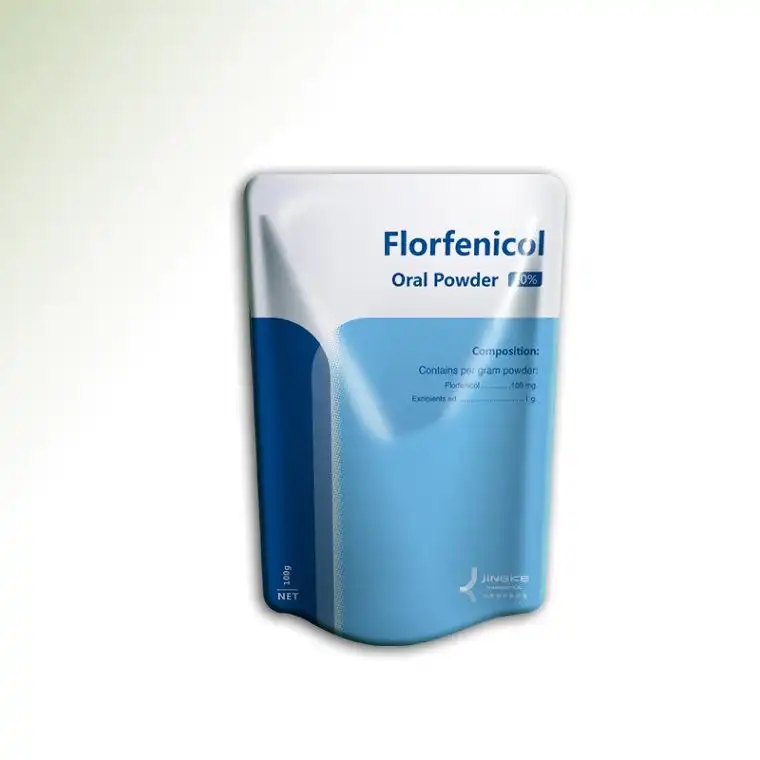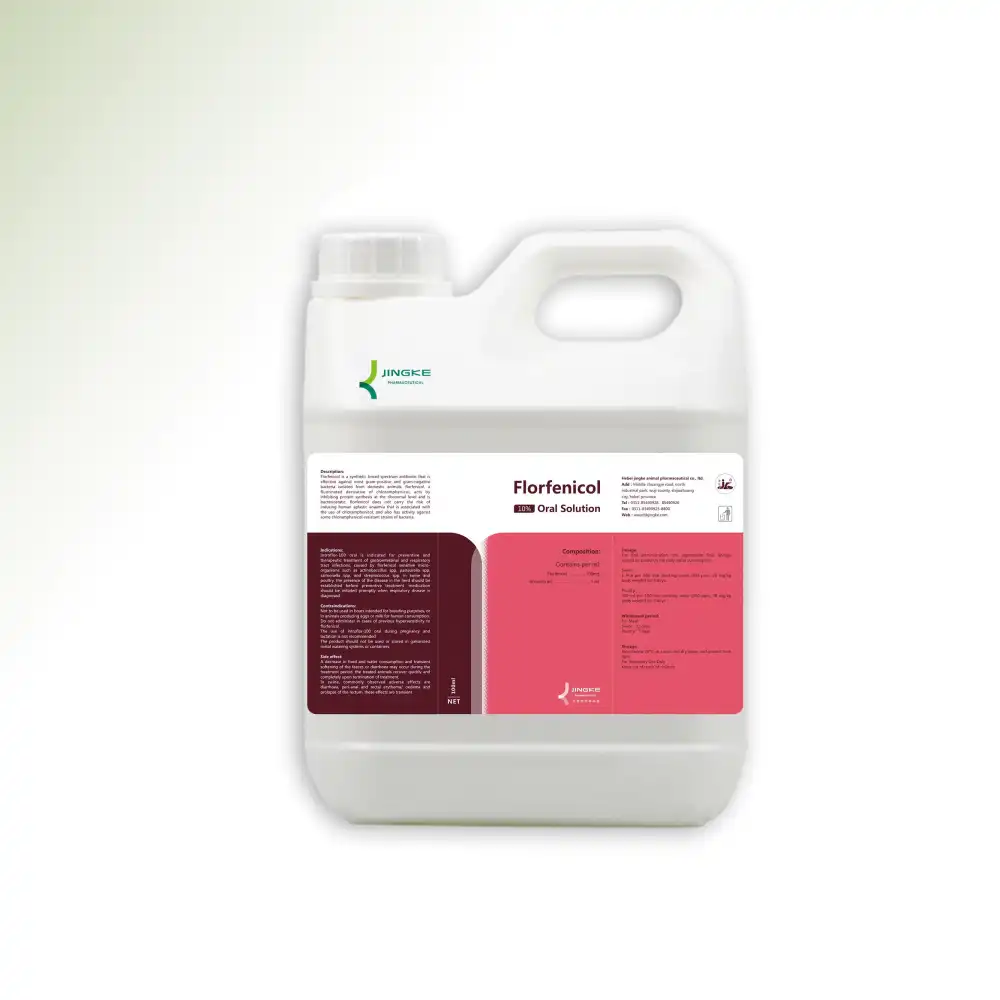Florfenicol is a broad-spectrum antibiotic with good inhibitory effects on both Gram-positive and Gram-negative bacteria. Consequently, many pig farms frequently use large amounts of florfenicol to prevent or treat swine diseases, especially when diseases are prevalent. Some farm veterinarians use excessively high doses of florfenicol to treat or prevent diseases regardless of the specific ailment, the affected population, or the stage of production. However, florfenicol is not a panacea and must be used rationally to achieve the desired results.
Florfenicol is Not a Panacea: The Method of Use is Crucial
Florfenicol is a commonly used antibacterial drug on pig farms. It has an extremely broad antibacterial spectrum, with strong bactericidal effects against both Gram-positive and Gram-negative bacteria. It also exhibits significant antibacterial activity against anaerobic Gram-positive and Gram-negative spirochetes, rickettsiae, and amoeba.
In vitro and in vivo tests show that the antibacterial activity of florfenicol is significantly superior to current antibacterial drugs, such as chloramphenicol (now banned), thiamphenicol, oxytetracycline, tetracycline, and ampicillin, as well as the widely used quinolone drugs. After intramuscular injection, florfenicol can reach therapeutic concentrations in the blood within 1 hour, and peak concentrations are reached within 1.5 to 3 hours. An effective blood drug concentration can be maintained for more than 20 hours after a single administration.
Furthermore, florfenicol can cross the blood-brain barrier, making its therapeutic effect on animal bacterial meningitis unmatched by other antibacterial drugs. Used at the recommended dosage, it has no toxic side effects, overcoming the risk of aplastic anemia and other toxicities associated with thiamphenicol. It does not pose a hazard to animals or food products and is used to treat systemic infections caused by bacteria in various parts of animals, including the prevention and treatment of bacterial respiratory diseases, meningitis, pleuritis, mastitis, intestinal infections, and postpartum syndrome in pigs.
Which Swine Diseases Does Florfenicol Treat Best?
- Recommended as the first-line drug: Florfenicol is the recommended first-line drug for swine pasteurellosis (shipping fever), porcine contagious pleuropneumonia, and Haemophilus parasuis infection (Glasser’s disease). It is particularly suitable for treating bacteria resistant to fluoroquinolones and other antibacterial drugs.
- Also used for treatment, but not the first choice: Florfenicol can also be used to treat various streptococcal infections (pneumonia), Bordetella bronchiseptica infections (atrophic rhinitis), and respiratory diseases caused by Mycoplasma hyopneumoniae (swine enzootic pneumonia), as well as salmonellosis (swine paratyphoid fever), Escherichia coli infections (neonatal piglet diarrhea, post-weaning diarrhea, edema disease), and other intestinal diseases caused by susceptible bacteria. While florfenicol can be used for these swine diseases, it is not the first-line drug, so its use should be cautious.
Common Misconceptions in Pig Farms

- Excessively high or low dosage: Some administer up to 400 mg/kg in feed or 40-100 mg/kg or even higher by injection. Others use dosages as low as 8-15 mg/kg. Excessive dosage leads to poisoning, while insufficient dosage is ineffective.
- Overly long treatment duration: Some use high doses of the drug indiscriminately for extended periods.
- Incorrect target animals or production stages: Indiscriminate use of this drug in pregnant sows and fattening pigs can lead to poisoning or drug residues, causing production and food safety issues.
- Inappropriate combinations: Florfenicol is often combined with sulfonamides and cephalosporins. Whether these combinations are scientifically sound and reasonable is worth investigating.
- Uneven mixing in feed administration: This can result in ineffective treatment or drug poisoning.
Precautions for Using Florfenicol
- It should not be used in combination with macrolides (such as tylosin, erythromycin, roxithromycin, tilmicosin, josamycin, azithromycin, clarithromycin, etc.), lincosamides (such as lincomycin, clindamycin), and the diterpene semi-synthetic antibiotic tiamulin. Combining them can produce antagonistic effects.
- Florfenicol should not be used in combination with β-lactams (such as penicillins, cephalosporins) and fluoroquinolones (such as enrofloxacin, ciprofloxacin, etc.). Florfenicol is a fast-acting bacteriostatic agent that inhibits bacterial protein synthesis, while the latter are fast-acting bactericidal agents that act during the reproductive phase. Under the influence of florfenicol, bacterial protein synthesis is rapidly inhibited, and bacteria stop growing and multiplying, weakening the bactericidal effect of the latter. Therefore, they should not be used together when rapid bactericidal action is required.
- It should not be mixed with sodium sulfadiazine for intramuscular injection. Avoid combining with alkaline drugs during oral or intramuscular administration to prevent decomposition and loss of efficacy. It should also not be mixed with tetracycline hydrochloride, kanamycin, adenosine triphosphate, coenzyme A, etc., for intravenous injection to avoid precipitation and reduced efficacy.
- Intramuscular injection may cause muscle degeneration and necrosis. Therefore, deep intramuscular injections should be alternated between the neck and hindquarters, and repeated injections at the same site should be avoided.
- Due to the potential for embryotoxicity, florfenicol should be used with caution in pregnant and lactating sows.
- When sick pigs have a high body temperature, it can be used in combination with antipyretic and analgesic drugs and dexamethasone for better results.
- Regarding the prevention and control of porcine respiratory disease complex (PRDC), some recommend combining florfenicol with amoxicillin, florfenicol with tylosin, or florfenicol with tiamulin. This approach is inappropriate because, from a pharmacological perspective, these combinations should not be used. However, florfenicol can be used in combination with tetracyclines such as doxycycline.
- Florfenicol has hematological toxicity. Although it does not cause irreversible aplastic anemia, the reversible inhibition of erythropoiesis it causes is more common than that caused by chloramphenicol (now banned). It is contraindicated in animals during vaccination or with severely impaired immune function.
- Prolonged use may cause digestive disturbances and vitamin deficiency or secondary infections.
- When preventing and treating swine diseases, caution should be exercised, and the drug should be administered according to the prescribed dosage and treatment course. Abuse should be avoided to prevent adverse consequences.
- The dosage should be reduced or the administration interval extended in animals with impaired renal function.
- If the temperature is low, the dissolution rate may be slow; if florfenicol precipitate is observed in the prepared solution, it can be quickly and completely dissolved by slightly warming (not exceeding 45°C). The prepared solution is best used within 48 hours.
It is very safe to choose the appropriate dosage form and use it with reference to the recommended dosage when following the above instructions. Some individual animals may experience transient loss of appetite, reduced water intake, or diarrhea, as well as slight pain and mild tissue reaction at the injection site. These are normal and will return to normal after stopping the medication.


